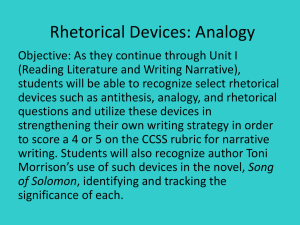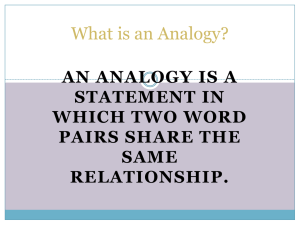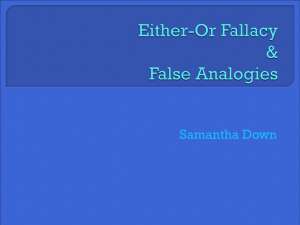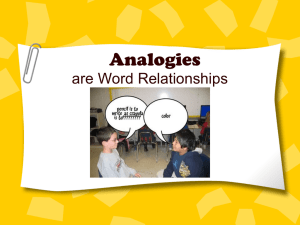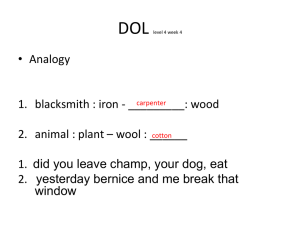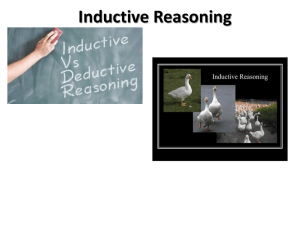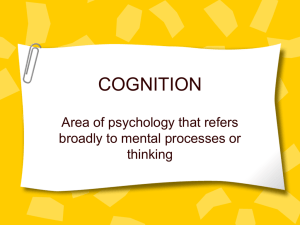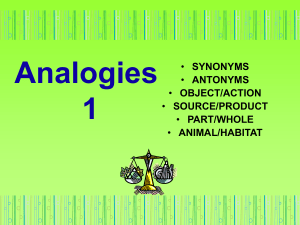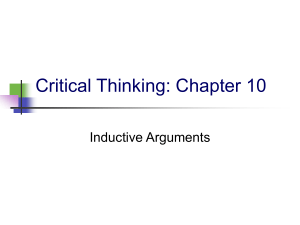Chapter 11 Textbook PPT Presentation
advertisement
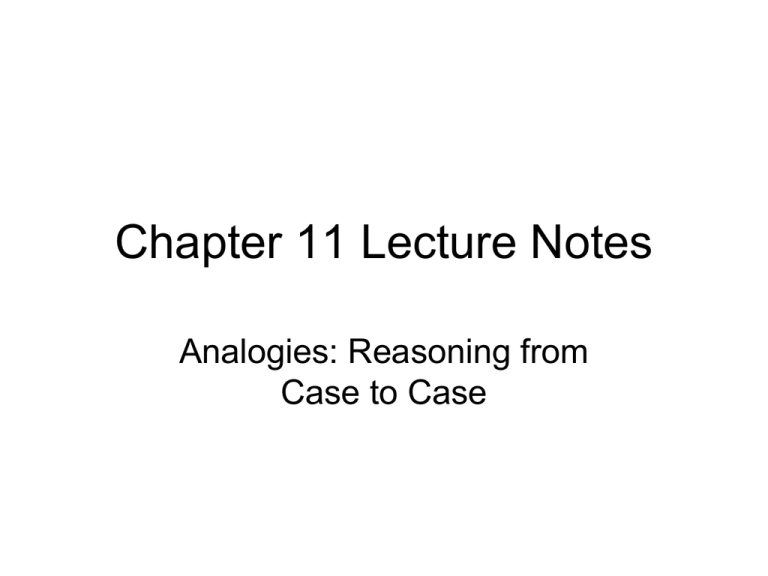
Chapter 11 Lecture Notes Analogies: Reasoning from Case to Case Chapter 11 In this chapter we deal with analogies. They are a powerful and plentiful argument form in the law, psychology, and medicine. There are many uses for analogies other than argument, and one such use is explanatory. Someone might use an analogy to explain how something works. This often happen in theoretical physics and other more mundane physical devices. Analogies can also be used to create interest and make descriptions of things that are unfamiliar. Chapter 11 Analogy and Consistency Treating relevantly similar cases similarly is a fundamental aspect of rationality (320). This general principle of rationality is one of the engines that makes analogies run. An appeal to consistency is just an attempt to treat relevantly similar cases similar. We do this in the law, disciplining out children, and any other relevantly similar case we might encounter. Chapter 11 Analogies have some basic parts: The analogue(s): the thing to which the primary subject is compared (there may be multiple analogues in an argument by analogy) The primary subject: this is the topic about which one derives a conclusion in an argument by analogy. The conclusion of the analogy: the is the main point or claim of the analogy. Chapter 11 When we treat similar cases similarly, we are acting rationally, and this kind of behavior is the basis of the legal system. Consistency in reasoning is the basis of the precedent system of law (322). In order to preserve justice we must treat similar cases similarly and this is just want analogical reasoning attempts to do. Chapter 11 Starting with agreed upon cases allows for certain kinds of analogies, which typically deal with conceptual cases. The general form of this kind of argument is: 1. The analogue has features a, b, and c. 2. The primary subjects has features a, b, and c. 3. It is by virtues of features a, b, and c that the analogue is properly classified as a W. So, 4. The primary subject out to be classified as a W. Chapter 11 Often arguments will make an implicit appeal for consistent treatment of cases with words or phrases like the following: (i) (ii) (iii) (iv) That’s just like saying You might as well say By the same reasoning According to those standards What we find in language is a real understanding of the analogy without a formal analysis. Most of us know about consistency and fairness on a gut level. If not, you can always appeal to a small child for fairness. Chapter 11 Refutation by Logical Analogy: Sometimes you can show that an argument is poor by comparing it with another, similar argument that is poor. When this occurs we say the argument was refuted by the use of a logical analogy. Sometimes we refer to it as a parallel case. For a clear case where an anti-prescription drug argument is refuted with an ice-cream argument on page 325. Chapter 11 Often an analogy is offered where the premises (and the analogue) are fictitious or hypothetical. This, however, is not a problem to the cogency of the analogy. As long as the analogy is set and clear, then we can make a decision about similar cases in a reasonable way. We don’t need actual similar cases to make the points we need to when evaluating or presenting an analogy. We we present analogies where the analogue is hypothetical, we call these a priori analogies. Chapter 11 Cases of a priori analogies should be evaluated using the ARG conditions as our other arguments. The difference between the a priori analogies and the inductive analogies will be made clear below. To evaluate an a priori analogy, you have to look at the intended conclusions and reflect on the relevant similarities and differences between the primary subject and the analogue (328). Are the relevant and sufficient to support the conclusion? Chapter 11 Inductive Analogies: In an inductive analogy, the analogue must be a real case. An inductive analogy is based on the factual similarities between the analogue and the primary subject. A classic example of inductive analogies deal with inferences about drug trials that occur in rats that is then abstracted to claims about use in humans. See pages 333 on for a detailed example. Chapter 11 One way to object to an analogy is to provide what one might call a counteranalogy. A counteranalogy typically points out a relevant property that that is different than the original analogy. When this happens there is typically a new conclusion that is the opposite of the original conclusion. Couteranalogies when well formed will constitute a powerful criticism of the original analogy. Chapter 11 Loose and Misleading Analogies: The fallacy of the faulty analogy occurs when the analogy is so loose and remote that there is virtually no support for the conclusion. The fallacy of two wrongs make a right occurs when an analogy is used to show two things that are wrong are similar and one is tolerated and so the other should be tolerated. This is to misuse the appeal to consistency. (341). Chapter 11 The fallacy of Slippery Assimilation: This is another misuse of the appeal to consistency. It is an argument where because things are arranged in a series, where there is very little difference between each member in the series, that the cases should be treated the same. Imagine a line of children all one millimeter different in height. There isn’t much of a difference between each one, but at some point one child isn’t tall enough to get on the amusement ride. It is a mistake to treat them all the same. Chapter 11 The Fallacy of Slippery Precedent: Slippery precedent argument cite a series of cases and use it to argue for a conclusion about a first case in the series, alleging that a slippery path will make it easy to slide from one case to another. The original action is good, but is compared to a bad action. The mistake is that good actions aren’t relevantly similar to bad actions to make the argument cogent. For a detailed example see page 344-5. Chapter 11 Term to review: Analogue Analogy Appeals to consistency A priori analogy Conceptual issues Counteranalogy Fallacy of slippery assimilation Fallacy of slippery precedent Fallacy of two wrongs make a right Inductive analogy Precedent Primary subject Refutation by logical analogy
